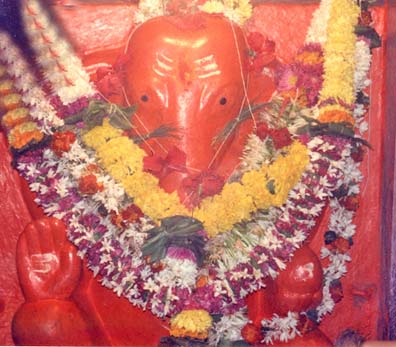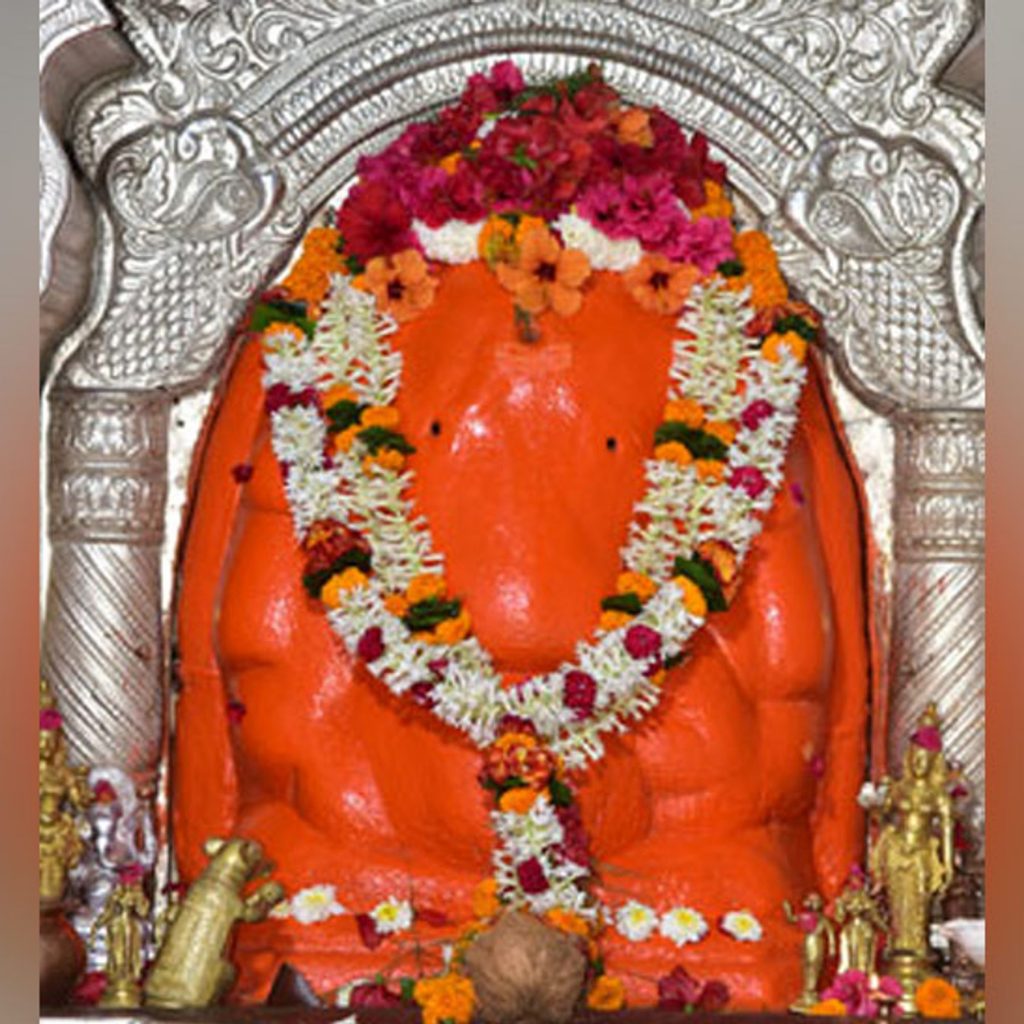Ashtavinayak Darshan: A Spiritual Pilgrimage through Maharashtra
Introduction
Ashtavinayak Darshan is a sacred and spiritual journey that takes pilgrims through the heart of Maharashtra, India. It is a unique pilgrimage that connects devotees with the eight significant temples dedicated to Lord Ganesha, one of the most revered deities in Hinduism.
The Ashtavinayak Yatra is not just a religious expedition; it’s a cultural and historical exploration that offers a deeper understanding of the rich heritage and devotion in this region.
History
The history of the Ashtavinayak Yatra dates back centuries and is intertwined with various legends and historical events. The pilgrimage became popular during the reign of the Peshwas in the 18th century, who were devout followers of Lord Ganesha. The eight temples were constructed and renovated during their rule, further solidifying the pilgrimage’s significance.
- Moreshwar Temple, Morgaon: This temple marks the starting point of the yatra.
- Siddhivinayak Temple, Siddhatek: This temple is located atop a hillock and offers breathtaking views.
- Ballaleshwar Temple, Pali: Named after a devoted child, Ballal, this temple is known for its intricate architecture.
- Varadvinayak Temple, Mahad: It’s the only temple where Lord Ganesha’s trunk is positioned to the right.
- Chintamani Temple, Theur: Legend has it that Lord Ganesha retrieved the invaluable jewel Chintamani from a greedy demon.
- Girijatmaj Temple, Lenyadri: This temple is situated within a series of caves.
- Vighneshwar Temple, Ozar: The temple is renowned for its historic architecture.
- Mahaganapati Temple, Ranjangaon: This temple is the last and final stop of the yatra, representing the victorious form of Lord Ganesha.
Ashtavinayak Ganpati List
- Mayureshwar
- Siddhivinayak
- Ballaleshwar
- Varadavinayak
- Chintamani
- Girijatmaj
- Vighneshwar
- Mahaganpati
Ashtavinayak Yatra Rules
If you are going to attend the Ashtavinayak yatra by following all the rituals, here are the two rules you have to keep in mind.
We can say that all these rules you have to follow if you have some wish which wants to come true or you have some “Navas” or “Vow” to complete.
If you are attending or doing the yatra without having anything in mind, you can skip all these things and attend the yatra with a pure heart.
It is said that by following all rituals and rules, Lord Ganesh gives his blessing to you and fulfills all your wishes.
The first rule to follow is that you have to start the Ashtavinayak yatra by taking the Darshan of Moreshwar of Morgaon and have to end it with the Darshan of Moreshwar of Morgaon only.
After starting and ending the Ashtavinayak yatra with the Darshan of Moreshwar, can be assumed that the Ashtavinayak yatra was completed.
The second rule you have to keep in mind is that you can not go to your home or anyone else’s for rest during the Yatra.
It is said that you have to complete it without stopping or resting at anybody’s home.
All these rules are believed and we are confirming or saying that you have to follow these rules, but as per rituals, everybody follows this.
Ashtavinayak Yatra Routes Map
Below we try to cover the details of each temple details and convenient routes of the same.
| Temple | Location |
|---|---|
| Mayureshwar Temple | Morgaon, Pune district |
| Siddhivinayak Temple | Siddhatek, Ahmednagar district |
| Ballaleshwar Temple | Pali, Raigad district |
| Varadavinayak Temple | Mahad, Raigad district |
| Chintamani Temple | Theur, Pune district |
| Girijatmaj Temple | Lenyadri, Pune district |
| Vighneshwar Temple | Ozar, Pune district |
| Mahaganpati Temple | Ranjangaon, Pune district |
Ashtavinayka Yatra Sequence
1. Ganesha Temple, Morgaon (Moreshwar Temple)

Moreshwar is the first Vinayak you have to start your Ashtavinayak yatra with and it is the last one to end your yatra with. The Temple was built during the Bahamani rule, with the black stone which has the four gates.
To save the temples from the attack of the Mughals, it is built into the middle of the village with the minarets covered from all four sides to give the impression of the mosque.
The Unique thing you will see here is that there is a Nandi, sitting in front of the temple, Nandi can be seen in the temples but normally in the temples of Shiva only.
There is a story behind this, it says that this Nandi was being carried to the other Shiva temple only, but the vehicle carrying him broke down in front of the temple.
The Nandi statue is placed in the same place where it is right now. After that, the Nandi could not be removed from its current place until now.
The murti of the Lord Ganesha is riding onto the peacock, with the two other murtis of Siddhi and Riddhi.
The temple is located a good way 55 km from Pune, close to the river Karha in the town of Moregaon. The town gets its name from the Marathi name of the bird peacock – there used to be a lot of peacocks in this town in the old times, and the town is likewise set out looking like a peacock.
Below are the distance and the time to reach the temple from Pune and Mumbai.
Distance from Pune: 70Km
Time to Reach from Pune: 1hr 50 mins
Distance from Mumbai: 217Km
Time to Reach from Pune: 4hr 26 mins
Morgaon Ganpati temple timings
The Temple is open to devotees from 5 AM till 10 PM. The Prakshal Pooja, Shodashopachar Pooja, Panchopachar Pooja, and the Shej Aarti are some of the rituals that are performed every day.
2. Siddhivinayak Temple Siddhatek

You can visit the Siddhivinayak of the Siddhatek next after the Morgaon as it is a close one.
The Siddhivinayak is unique from all the 8 Vinayaks as the trunk of this murti is positioned to the right.
Peshwa’s general Haripant Phadake built the main road towards the temple.
Punyashloka Ahilyabai Holkar built the present temple in the 18th century, the idol of Lord Ganesha is nearly 3 feet tall and 2.5 feet wide.
It is said that the right side trunk of Ganesha is supposed to be very strict for the devotees.
The Temple is situated next to the Bhima River, 15 feet in height and 10 feet wide.
You have to travel nearby for 1hr 40min to reach Siddhatek from Morgaon.
This temple is located off the Pune-Solapur highway around 48 km from the town of Srigonda in Ahmadnagar district. The temple is located close to the Bhima River. On the Pune-Solapur railroad, the Daund Rail route station is 18 km from here.
Distance from Morgaon: 66KM
Siddhatek Ganpati Temple Timings
The Temple opens at 4:15 AM and closes at 9 PM daily
3. Ballaleshwar Ganpati (Pali)

It is believed that Lord Ganesha has to save the boy Ballala, who was beaten by the villagers and his father for his determined loyalty to Ganesha.
In 1760 Nana Phadanvis reconstructed the original wood temple into a stone temple.
The temple is constructed in such a way that the sun rays fall onto the Lord Ganesha murti at sunrise during the Dakshinayan.
The temple is situated in the town of Pali, off the Mumbai-Pune expressway, around 11 km before Nagothane on the Mumbai-Goa expressway. This is found 30 km toward the southwest of Karjat Railroad Station. Mumbai-Panvel-Khopoli-Pali is 124 km. Pune-Lonavla-Khopoli-Pali is 111 km.
Behind this temple is the temple of Shri Dhundi-Vinayak which is West-facing. This is an extremely interesting icon which is facing the West. The story says that this symbol was a similar one which was tossed by Ballala’s dad (Kalyani-seth) while Ballala was revering it.
Distance of Siddhivinayak of the Siddhatek: 229KM
Ballaleshwar Pali Ganpati Temple Timings
The Temple is open daily from 5:30 AM to 10 PM.
4. Varadvinayak Mahad

The attractive Prince Rukmangad denied sage Vachaknavi’s better half Mukunda’s illegal call and was reviled to experience the ill effects of infection. Mukunda was fulfilled by Indra who enchanted her as Rukmangad and she bore a kid by the name Grutsamad.
At the point when Grutsamad found reality, he reviled his mom Mukunda to turn into the tree of Bori and she thus reviled him to bear an evil spirit child named Tripurasur, the person who was crushed by Shiva subsequent to imploring the Ranjangaon Ganesha.
Grutsamad in the wake of being reviled went to the woodland of Pushpak and revered Ganesha. Sage Grutsamad is well known for the mantra GaNanaN Tva. He established the temple and called this Ganesha: Varada-Vinayak.
The symbol faces the east, has its trunk to the left, and has been in the consistent organization of an oil lamp – said to be continuously starting around 1892. There are four elephant icons on four sides of the temple. The corridor is 8 feet by 8 feet. The dome is 25 feet high and is golden at the top. The dome has plans of the cobra.
Here temples are permitted to offer their tribute and appreciation personally and pay their homage and respects to the icon. They are permitted in the prompt area of this icon to play out their requests.
The temple is found three kilometers off the Mumbai-Pune roadway close to Khopoli (80 km from Pune) and is accordingly nearest to Mumbai city. Karjat Railroad Station, Karjat on the Mumbai-Pune rail route is 24 km from this spot and 6 km from Khopoli.
Distance from Ballaleshwar Pali: 284 KM
Varadavinayak Ganpati Temple Timings
The Temple opens at 6 AM and closes at 9 PM every day.
5. Chintamani Ganpati (Theur)

You can visit the Chitamani very next after the Siddhivinayak of Siddhatek, as both temples are close.
One of the famous stories of the temple is Lord Ganesh is supposed to have gotten back the precious Chintamani Jewel from the cheap Guna for philosopher Kapila at this spot.
After bringing back the Chintamani Jewel, Kapila put it into the Ganesha’s neck, and hence the word comes “Chintamani Vinayak”.
The Village is also known as the Kadambanagar in the old times as this all happens below the Kadamb tree and the lake behind the tree is also known as the Kadambteertha.
Right now there is no space to park the vehicle outside the temples but there is a huge space inside the temple.
The Outer of the temple is built using wood and it looks very attractive and beautiful It is believed to be built by Peshwas.
If we calculate the distance of the temple from Pune is only 30km and close to the Pune Solapur Highway.
The temple is situated 22 km from Pune, off the Pune-Solapur expressway, and is thus the closest to Pune. The town of Theur sits at the conversion of three significant provincial rivers — Mula, Mutha, and Bhima.
Distance from Varadavinayak: 205KM
Chintamani Ganpati Temple Timings
The Temple opens at 6 AM and closes at 10 PM daily.
6. Girijatmaj Ganpati Lenyadri

The Second Ganesha you will visit on the second day of the yatra is the Girijatmaj of Lenyadri.
Be strong and Have enough water with you while visiting the Girijatmaj Ganesha, as the temple is located in caves about 100 feet from the ground.
We can say that the Lenyadri is one of the most beautiful places to visit among the 8 Vinayak.
Even if you want to go outside during the weekends, you can think about this place, as it is beautiful to visit.
There are many trees and you feel nature glims while going upward.
Many small caves have lots of cells in them for meditation. While going be aware of the monkeys as they grab the carry bag from you directly.
It is said that the Mata Parvati performed an atonement to have Ganesha at this point.
The name Girijatmaj means, “Girija” is “Parvati” and “Atmaj” is “Son”, Parvati’s Son Ganesha.
The temple is sculpted into a single stone hill having more than 300 steps, the hall of temples is 50 feet long and 7 feet tall.
The temple is located 12 km from Narayangaon, which is around 94 km from Pune on the Pune-Nashik expressway. The closest railway station is Talegaon. From Junnar, Lenyadri is around 5 km. Shivaneri palace is nearby (5 to 6 km) where Chhatrapati Shivaji Maharaj was born.
Distance from Theur Ganpati: 112KM
Lenyadri Girijatmaj Ganpati Temple Timings
The devotees are allowed to visit the shrine only from sunrise to sunset.
7. Vighneshwar Temple (Ozar)

The mythology of experiences including this symbol expresses that Vighnasur, an evil presence was made by the king of Gods, Indra to obliterate the request coordinated by King Abhinandan. In any case, the evil presence went above and beyond and annihilated all Vedic, strict demonstrations and to answer individuals’ requests for security, Ganesh crushed him.
The story proceeds to express that on being vanquished, the devil asked and begged Ganesha to offer kindness. Ganesha then, at that point, in truth in his request, yet depending on the prerequisite that evil spirit shouldn’t go to where Ganesha worshipping is going on. Consequently, the evil presence asked for some help that his name should be taken before Ganesha’s name, hence the name of Ganesha became Vighnahar or Vighneshwar. The Ganesha here is called Shri Vighneshwar Vinayak.
The temple points toward the east and is encircled by a thick stone wall. One can stroll on the wall. The principal corridor of the temple is 20 feet long and the inward lobby is 10 feet long. This symbol, confronting the east, has its trunk towards the left and rubies in its eyes.
There is a precious stone on the temple and some gems in the navel. Icons of Riddhi and Siddhi are put on the different sides of the Ganesha symbol. The temple top is Brilliant and is perhaps worked by Chimaji Appa in the wake of overcoming the Portuguese leaders of Vasai and Sashti. The temple is likely worked around 1785CE.
This temple is situated simply off the Pune-Nashik Highway, in the town of Ozhar. It is encased on all sides by high stone walls, and its zenith is made of gold. The temple is arranged on the banks of the river Kukadi. By means of Mumbai-Thane-Kalyan-Bapsai-Saralgaon-Otur, Ozhar is 182 km.
In Ozar there are Bhaktnivas available to rest for the devotees at a very low cost.
You can rest 4-5 people in one room with the charge of only rupees 500 and also the breakfast, team available in the morning.
Distance from Girijatmaj Ganpati: 15 KM
Ozar Ganpati Temple Timings
The Temple is open to devotees from 5 AM to 11 PM. However, darshan is closed between 11 AM to 4 PM in the afternoon.
8. Mahaganpati Temple (Ranjangaon)

It is believed that Lord Shiva is worshipped here, before fighting with the demon Tripurasura, Shiva worshipped Ganesh here.
It is also believed that Lord Shiva built the temple where he worshipped the Ganesha and the village or town set up called the Manipur which is currently known as the Ranjangaon.
The campus of the temple is large and also has the story painted onto the inner walls
The temple is close to the Pune Nagar Highway via Shikrapur and is only a distance of 50 KM from Pune.
It is believed and said that the original idol of Lord Ganesh is hidden in the basement.
It is also said that the Idol which is hidden in the basement has 10 trunks and 20 hands called Mahotkat.
However, there is no such confirmation about the same and the temple authority denied the existence of an Idol.
Ranjangaon Ganpati is one among the Ashtavinayak, celebrating eight occasions of legends connected with Ganesha. This temple Ganpati idol was introduced and given by the “Khollam” family one of the Gold Smith family in Ranjangaon. As per the set of experiences, the temple was underlying somewhere in the range of ninth and tenth hundreds of years.
There are two guardsmen on the gate namely “Jay” and “Vijay” and the temple is designed so that during the Dakshinayan the sun rays fall directly onto Lord Ganesh.
Distance from Ozar Ganpati: 65KM
Ranjangaon Ganpati Temple Timings
The Temple opens at 5:30 AM and closes at 10 PM.
Ashtavinayak yatra from Mumbai
Source: YouTube Bharat Bhramanti
Important Facts
- The Ashtavinayak Yatra covers approximately 900 kilometers, creating a circular route in the state of Maharashtra.
- The journey is not just about visiting temples but also discovering the local culture, traditions, and culinary delights of the region.
- The pilgrimage can be undertaken by car, bus, or even on foot for the more adventurous souls.
- Each temple has a unique legend and historical significance, making the yatra an educational and spiritual experience.
- The yatra is a symbol of unity, attracting people from all walks of life and backgrounds.
Conclusion
The Ashtavinayak Darshan is more than just a pilgrimage; it’s a spiritual and cultural odyssey that connects devotees with the essence of Lord Ganesha and the rich history of Maharashtra. As pilgrims embark on this sacred journey, they not only seek blessings but also discover the beauty of this diverse state. The Yatra is a testament to the unity and devotion of people from all corners of the world who come to experience the magic of Ashtavinayak.




